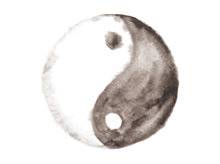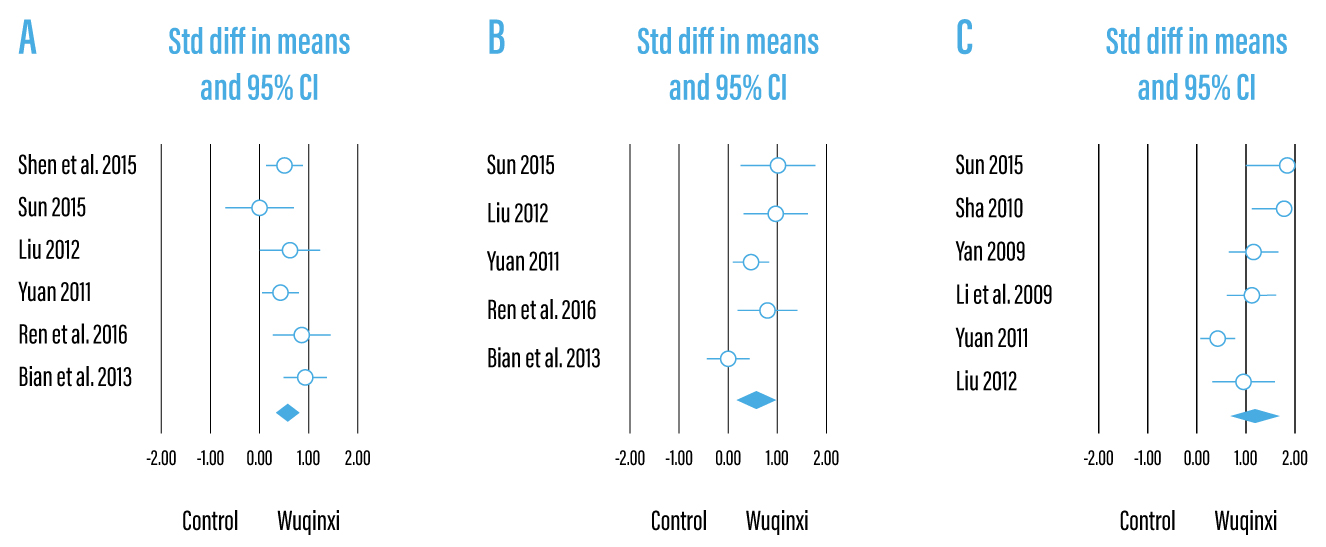
Controlling Cardiovascular Risk Factors with Traditional Chinese Exercises
Chronic diseases account for about 71% of all deaths globally in each year, whereas cardiovascular disease (CVD) is one of the main chronic diseases in middle-aged and elderly population. Notably, hypertension and hyperlipidemia are important risk factors for a variety of CVD1. Hence, in view of the substantial health burden of CVD, proper control of the risk factors for CVD is crucial. Lifestyle interventions including diet and physical activity are recommended for preventing CVD2. In particular, traditional Chinese exercises (TCE) such as Tai Chi and Qigong have long been practiced by Chinese to enhance both physical and mental well-being. There are numerous studies suggested the efficacies of TCE in promoting CV health. This article highlights particularly the clinical benefits of Tai Chi and Qigong in controlling CV risk factors.
An Overview on Tai Chi and Qigong
Tai Chi is a mind-body movement therapy with origins in traditional Chinese martial and healing arts, characterised by postural alignment, weight shifting, and relaxed circular movements. In contrast to conventional aerobic workouts and weight-training, Tai Chi incorporates both physical and meditative element. It is non-strenuous and relatively low impact. Former reports suggested that Tai Chi would improve balance and reduce the risk of fall, particularly among elderly. In addition, Tai Chi has also been reported to increase musculoskeletal strength and flexibility, reduce pain and anxiety, and improve self-efficacy3.
Similar to Tai Chi, Qigong is one of the most popular traditional Chinese mind-body exercises practiced for thousands of years for improving physical and psychological health. Conceptually, “Qi” is the vital life-energy that flows in the meridian system of the body. The basic components of Qigong include concentration, relaxation, meditation, rhythmic breathing regulation, body posture, and gentle movements. With regular practice and rehearsal of the structured postures or movements, as well as concentration on mind and breath, Qigong practitioners would experience mood stabilisation and improve strength and fitness4.
Established Clinical Benefits of TCE
Although TCE, including Tai Chi and Qigong, has been practiced for long, with a wide spectrum of health benefits reported, solid clinical evidence on the benefits of TCE is limited. One of the main reasons is that most theories of TCE are written in traditional Chinese language. More importantly, many of the TCE protocols adopted in previous trials may vary from the traditional ones. For instance, most Tai Chi protocols described in former trials were simplified that the number of movements was greatly reduced for the easy learning and practice for participants5. Yet, clinical trials evaluating the health benefits of TCE are emerging.
In a recent randomised control trial (RCT) by Wen and Su (2021), 66 adults with hypertension and hyperlipidemia were randomly assigned to practice 6-week Wu-style Tai Chi exercise or 6-week simplified Tai Chi exercise, 1 hour per session and 3 sessions per week for both groups. The results demonstrated that 6-week Tai Chi exercise would significantly improve total cholesterol level, systolic blood pressure (SBP) and low-density lipoprotein cholesterol (LDL-C) as compared to the baseline. Notably, the improvement achieved by Wu-style Tai Chi was significantly higher than those practiced simplified Tai Chi exercise6. Thus, the results showed that Tai Chi exercise would help control hypertension and hyperlipidemia, whereas traditional style Tai Chi exercise yielded better outcomes than the simplified ones.
On the other hand, a meta-analysis of RCT by Zou and co-workers (2019), which included clinical data of 628 participants with different health status in 9 studies, suggested that Wuqinxi exercise, one type of Qigong, was significantly (p < 0.001) associated with improvement in SBP (Figure 1A), diastolic blood pressure (DBP, Figure 1B), total plasma cholesterol, triglyceride and LDL-C (Figure 1C) as compared to control group received usual care. In the pooled analysis, the intervention duration lasted 8 to 48 weeks, each session lasted 30-60 min, with 3-7 sessions per week. Of note, the results indicated that longer duration of Wuqinxi intervention would yield better improvement in DBP (p = 0.01) and triglyceride (p = 0.02)7. Based on previous clinical results, Tai Chi and Qigong are likely effective interventions to alleviate CV risk factors.
Insights on Underlying Mechanisms of CV Benefits of TCE
While clinical evidence on CV benefits of TCE is emerging, the underlying mechanisms of the physiological effects has attracted clinical interest. It is well known that exercise induces the secretion of myokines from skeletal muscle, which improve inflammation, mitochondrial function, and insulin sensitivity. However, recent studies suggested that hepatokines, proteins secreted by the liver, can directly affect chronic metabolic diseases by modulating signaling pathways associated with energy metabolism8.
Angiopoietin-like 4 (ANGPTL4), a hepatokine belonging to the angiopoietin-like protein gene family, has been shown to regulate lipid metabolism via stimulating lipid degradation and inhibiting lipoprotein lipase (LPL) activity in adipocytes9. Catoire et al (2014) showed that, during endurance exercise, selective induction of ANGPTL4 in non-exercising muscle reduces local fatty acid uptake, while directing fatty acids to the active skeletal muscle as fuel10. Hence, ANGPTL4 would modulate LPL activity and is important in fine-tuning lipid metabolism in response to physical exercise. Nonetheless, further studies are required to verify whether exercise-induced ANGPTL4 secretion mediates the benefits of exercise for metabolic diseases. Moreover, investigations confirming ANGPTL4 secretion in response to TCE are needed.
Summary
While there are pharmaceuticals for controlling the risk factors of CVD, exercise interventions are highly recommended. Particularly, Tai Chi and Qigong involve relaxed movements with relatively lower physical impacts and thus are more suitable for elderly population. While clinical evidence on CV benefits of TCE is emerging, little is known about the underlying mechanisms of the physiological effects. Further investigations on the functions of exercise-induced hepatokines, such as ANGPTL4, would improve our understanding on their roles in regulating lipid metabolism in metabolic as well as CV diseases.

Figure 1.
Effects of Wuqinxi on A) SBP, B) DBP, and C) LDL-C7
References
1. Zhou et al. Lancet (London, England) 2019; 394: 1145. 2. Arnett et al. Circulation 2019; DOI:10.1161/CIR.0000000000000678. 3. Yeh et al. Am J Med 2004; 117: 541-8. 4. Guo et al. Evid Based Complement Alternat Med 2018; DOI:10.1155/2018/3235950. 5. Jahnke et al. Am J Health Promot 2010; 24: e1. 6. Wen et al. Int J Environ Res Public Health 2021; 18: 5480. 7. Zou et al. Int J Environ Res Public Health 2019; 16: 1396. 8. Seo et al. J Clin Med 2021; 10: 385. 9. Abu-Farha et al. Lipids Health Dis 2018; 17: 35. 10. Catoire et al. Proc Natl Acad Sci U S A 2014; 111: E1043.





